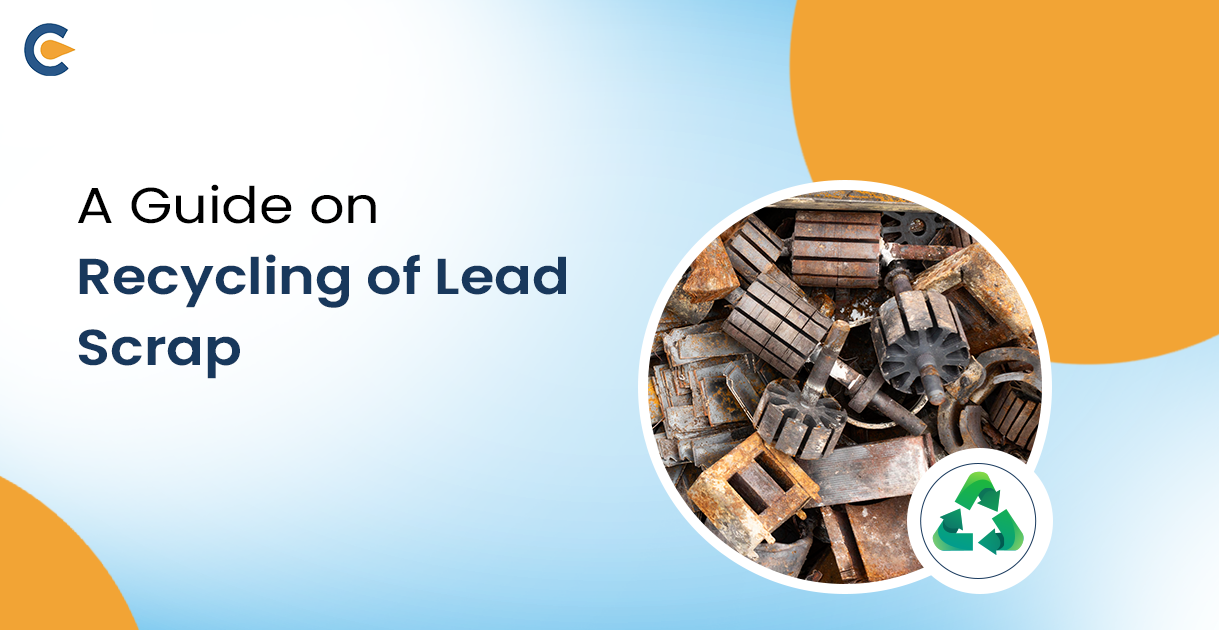Lead has the highest recycling rate of all metals. Due to its resistance to corrosion, lead scrap may be recycled for decades or even centuries after it is made, according to lead scrap providers. New environmental laws in many countries have led to a major decline in the dissipative uses of lead, which included paint, pigments, leaded gasoline, stabilizers, solder, and ammunition.
Why Recycle Lead Scrap?
The primary worldwide source of recycling lead scrap is lead acid batteries. The waste from associated production plants and scrap lead acid batteries contain more than 90% of the lead that may be recycled, and utilized automobile batteries makeup around 85% of all the waste materials utilized in lead acid batteries. Other lead waste products that can be recycled and used to increase the amount of scrap lead available for sale include sheaths from phone and power cables, lead pipe and sheet, printing metals, weights (particularly from automobile and truck tyres), residues, dross, sludge, and dust.
How to Start a Business of Recycling Lead Scrap
If you want to start a business of recycling of lead scrap, the following are the steps you must follow:
- The first step in starting a business of recycling of lead scrap is to make a business plan.
- After making a business plan, all the crucial registration and license requirements are to be fulfilled, which are required for a business that recycles lead scrap.
- After that, find a place where you will collect all scrap for recycling of lead scrap.
- Make all the arrangements for transportation of the lead scrap that is going to be recycled.
- Get all the machinery which is necessary for starting a business of recycling of lead scrap.
Advantages of Recycling of Lead Scrap
Some of the key advantages of recycling of lead scarp are:
- Encourages the environmental benefits
- It helps in saving energy.
- Compliance with rules and regulations for protecting the environment.
- Employment generation.
- It is also beneficial in reducing the pollution.
- Numerous economic benefits
Recycling Process of Lead
The following is a detailed procedure that lead-acid battery recycling companies follow:
1. Collection for Recycling of Lead Scrap
The first step in the recycling of lead scrap is to collect the batteries. Gathering lead acid batteries from dumping sites is the step. At this point, the used batteries are collected by a recycling company.
2. Crushing for Recycling of Lead Scrap
The next step is crushing in the recycling process of lead. The batteries must be broken apart next. At the recycling facility, the battery is broken up into smaller pieces using hammer mills.
3. Sorting for the Recycling of Lead Scrap
The third step in the recycling process of lead for recycling of lead scrap is sorting. Sorting involves dividing a lead-acid battery component. The task of separating a battery’s lead and metal components from its paper and plastic components falls to battery waste recyclers. Subsequent processing is performed on the lead and heavy metals present in the battery.
4. Sieving for Recycling of Lead Scrap
Thermoplastics are extracted from batteries by recyclers. The battery’s liquid is then strained away, leaving the dry lead parts behind. After that, lead and heavy metals are treated further in order to complete the recycling process. The plastic components that were taken out of the battery are being cleaned in the interim. The thermoplastic is thereafter sent to plastic recyclers, which reprocess them by the recyclers engaged in the battery recycling industry. Thermoplastics are perfect for creating battery cases. Furthermore, these thermoplastics are used by plastic producers to produce novel plastic goods.
5. Extraction Processes
Recovering the lead and heavy metal elements from the battery remnants is the last stage in the recycling process for lead-acid batteries. Lead is melted down and sent to manufacturers so they can create new batteries by recyclers.
Responsibilities of Recycler: Recycling of Lead scrap
There are some responsibilities that are to be fulfilled by all the recyclers prior to or post-recycling of lead scrap. They are:
- Fill out Form VI and submit it with the necessary information to the Ministry of Environment and Forests (MoEF) or one of its approved agencies to request registration.
- Verify that the terms and conditions for registration are being followed.
- Raise public awareness of the risks associated with lead and customers’ responsibility to return old batteries exclusively to authorized dealers or to the designated collection centre by using advertisements, magazines, and other means.
- Send in your yearly return to the state board using Form VII.
- Provide access to all documentation about the receipt of used batteries, including amounts and sources, so that the SPCB may review them.
- Mark re-processed the lead that was recovered.
Professional Assistance with Corpbiz
In order to properly handle hazardous wastes, we at Corpbiz will assist you in obtaining registration for Lead Acid Battery Recycling from the relevant government. We will also offer full assistance for the establishment of a Lead Acid Battery Recycling Plant. So, get in touch with Corpbiz right now.
Frequently Asked Questions
Approximately 99 per cent of lead-acid batteries are recycled in Europe, making lead one of the most recycled metals. The batteries’ lead may be recycled in its entirety. The battery business buys the majority of the recovered lead and utilizes it to create new batteries.
Lead recycling comes in a variety of forms. Lead is usually melted down and reformed into new goods like automobile batteries, bullets, or even architectural components once it has served its initial use. Secondary smelting is the process of melting and reforming lead.
Lead has long been recycled extensively, but these days, practically all recycled lead comes from lead acid batteries that are nearing the end of their useful lives.
It is most dependable when the batteries are made of lead. Lead batteries are incredibly affordable and economical. These batteries offer a great deal of convenience. This energy source is environmentally good because it is renewable.
Roughly 90% of lead-acid batteries are recovered through recycling. As mandated by the majority of state regulations, almost every merchant selling lead-acid batteries gathers spent batteries for recycling.
Lead-acid battery recycling is quite profitable, as is the lead-acid battery recycling industry. This is because the battery’s component parts have a high degree of recyclability.
This metal is useful for soldering since it is simple to work with and aids in the creation of electronics and other electrical equipment. However, bismuth has recently taken its position. Nevertheless, it’s a clear and classic option for installing roofs, electrical cables, and even sculptures.
Lead recycling works similarly to other metal recycling methods. Smelters break down lead-based goods, separating the lead from the other components before refining and smelting them together. New materials are subsequently made using the purified lead.
A secondary battery that may be reused and recharged is the lead acid battery. It is still among the first rechargeable battery technologies, having been developed for the first time in 1859. Lead (Pb) serves as the main component of the anode and cathode of the battery, while sulfuric acid serves as the electrolyte.
In order to recover valuable raw materials and keep hazardous waste from endangering the environment, waste lead acid batteries are broken down in lead acid battery recycling plants. Manufacturers purchase the recycled materials so they can make new batteries.
Recycling lead acid batteries helps to safeguard the environment by minimizing the release and safe management of dangerous materials like sulfuric acid and lead. The overall environmental impact of waste batteries is reduced by gathering and recycling batteries from different sources.
The responsibilities listed in the Battery Waste Management Rules must be met by a recycler running a lead-acid battery recycling plant. They include submitting quarterly reports on the CPCB portal, adhering to the CPCB’s waste management guidelines, putting the Hazardous Waste Management Rules into practice, keeping safety standards for the storage of spent batteries, avoiding dealing with unregistered entities in waste batteries, and offering recycling certificates.
Read Our Article: How To Dispose Of Plastic Waste In India?











